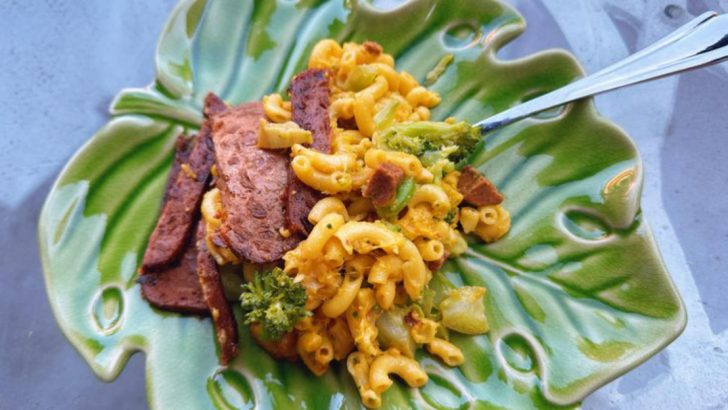When ingredients were scarce and ration books ruled the pantry, home cooks didn’t give up—they adapted. Wartime meals were built from scraps, substitutions, and a whole lot of grit.
These 15 dishes may seem odd today, but back then, they filled stomachs and kept families going through tough times.
Behind every one is a story of survival, love, and invention in the kitchen.
1. Mock Apple Pie

No apples? No problem. This Depression-era favorite used Ritz crackers, sugar, cinnamon, and lemon juice to mimic the sweet, tart filling of a traditional apple pie.
It sounds impossible, but the crackers soften and soak up the syrup, fooling the taste buds with every bite. Served warm, it gave families a taste of something familiar when fruit was nowhere to be found.
2. Hoover Stew

Elbow macaroni, hot dogs, canned tomatoes, and corn—all boiled together in one humble pot. The name stuck from the Great Depression, but it made a big comeback during World War II.
This dish was cheap, filling, and easy to stretch. School cafeterias and home kitchens alike relied on its ability to feed many with very little.
3. Potato Peel Soup
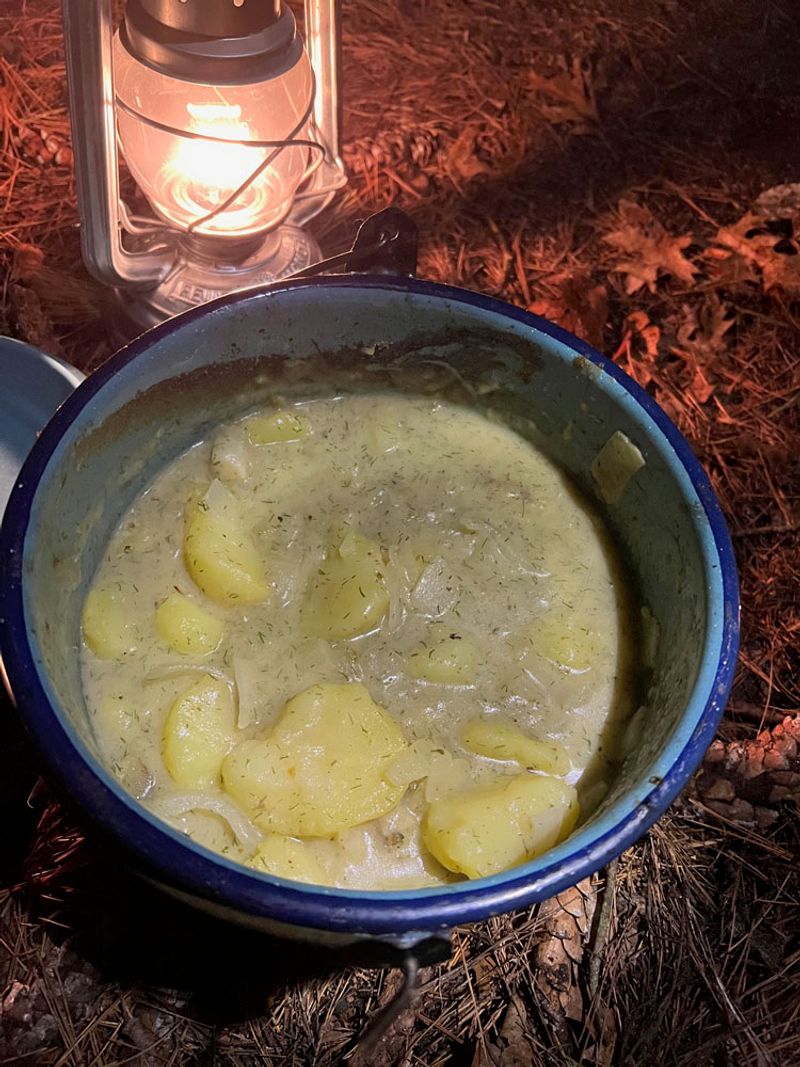
Peels that would normally be tossed out became the star ingredient in this thin, brothy soup. Simmered with water, onions, salt, and whatever scraps were left, it offered warmth on the coldest days.
It didn’t taste like much, but it felt like something. Every bowl was a quiet act of resilience.
4. Victory Garden Casserole
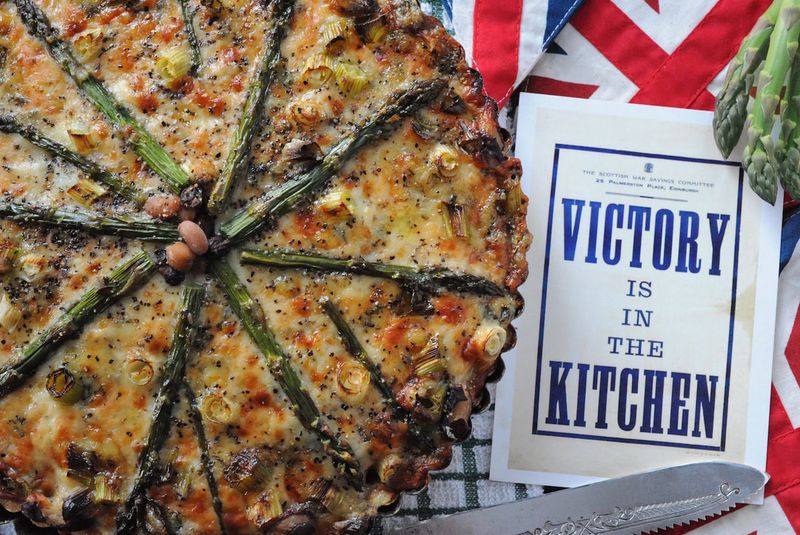
Zucchini, beans, and root vegetables straight from backyard gardens were tossed together in casseroles with breadcrumbs and a little cheese—if you were lucky. Nothing was wasted, and everything had a place.
Fresh-picked meant fresh flavor, even without meat. This was the taste of self-reliance and shared effort, layered in a dish.
5. Bread-And-Drippings

Crusty bread slices were topped with beef or pork fat saved from previous meals—often seasoned with salt or onions. It was greasy, rich, and surprisingly comforting.
This was survival food that felt indulgent, if only for a minute. A hot cup of tea and a slice could chase the cold away.
6. S.O.S.

Creamed chipped beef over toast sounds tame, but the nickname said it all. Served in military mess halls, it was salty, starchy, and just filling enough to keep going.
Troops groaned but ate every bite. At home, families made their own version with canned meat or leftover ham scraps.
7. Cabbage And Onion Hash
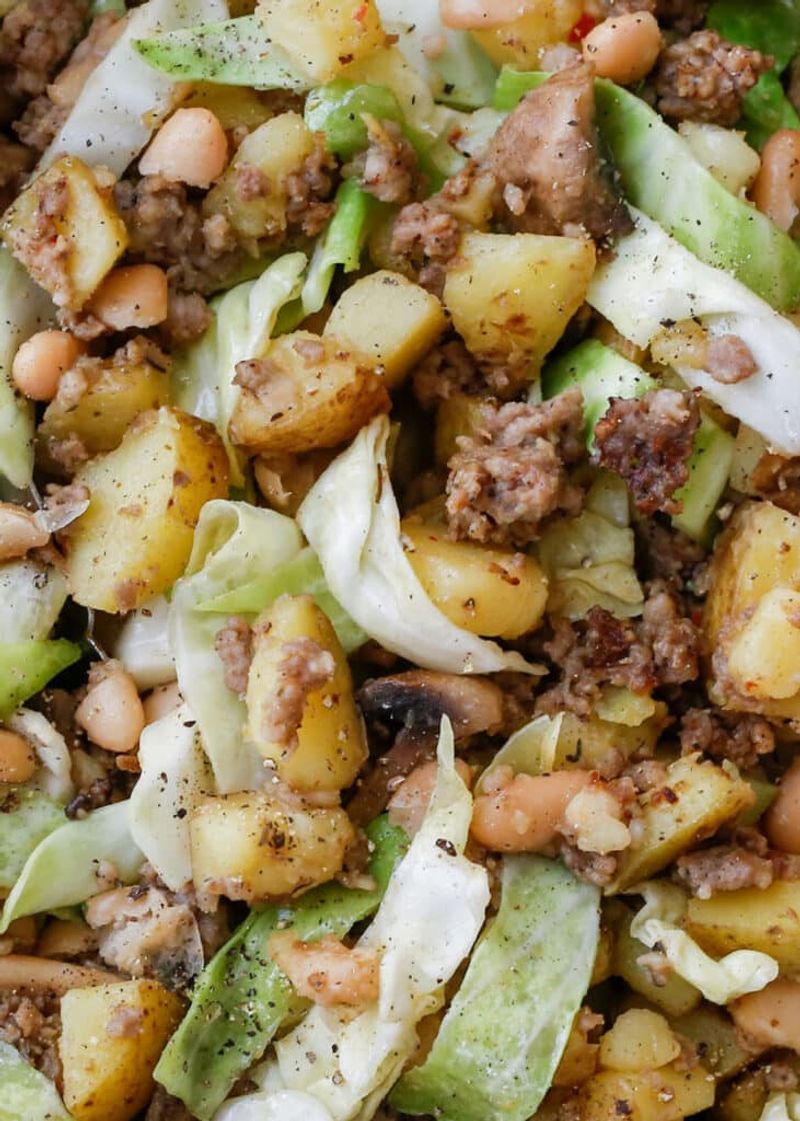
Chopped cabbage and onions, fried in oil or drippings until browned and tender, made for a warm and simple side—or the main event. A little vinegar gave it brightness, and potatoes stretched it further.
It smelled sweet and sharp, like the inside of a warm kitchen. Cooks turned bare cupboards into something deeply satisfying.
8. Carrot Marmalade

Grated carrots were boiled down with sugar and citrus peels to make a sweet, sticky spread. It added brightness to dry toast and was packed with whatever flavor could be coaxed from root vegetables.
Without real oranges or butter, this jam stood in as breakfast’s best friend. It sparkled in the sunlight like store-bought preserves—just a little more earthy.
9. Boiled Turnip Patties
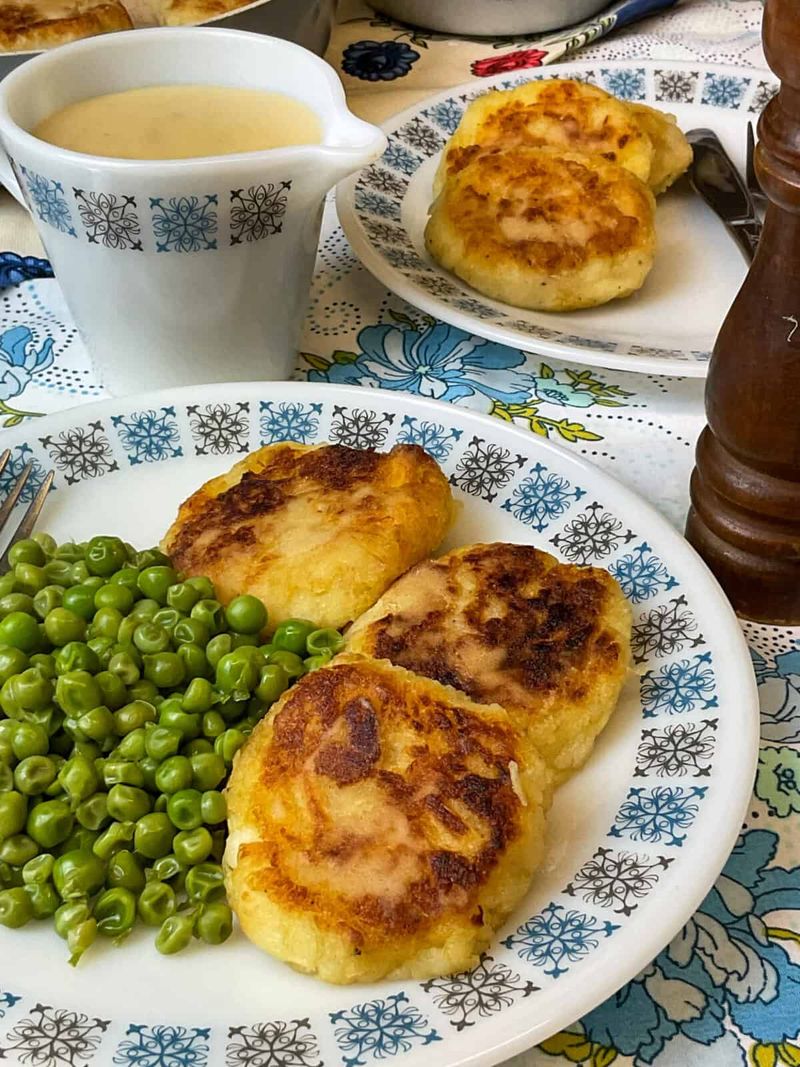
Mashed turnips were mixed with flour, salt, and a little lard, then shaped into patties and pan-fried. They were soft inside, crisp outside, and just enough to hold you over.
Bitter and bland became golden and filling with a little pan magic. Turnips never felt so essential.
10. Cornmeal Mush
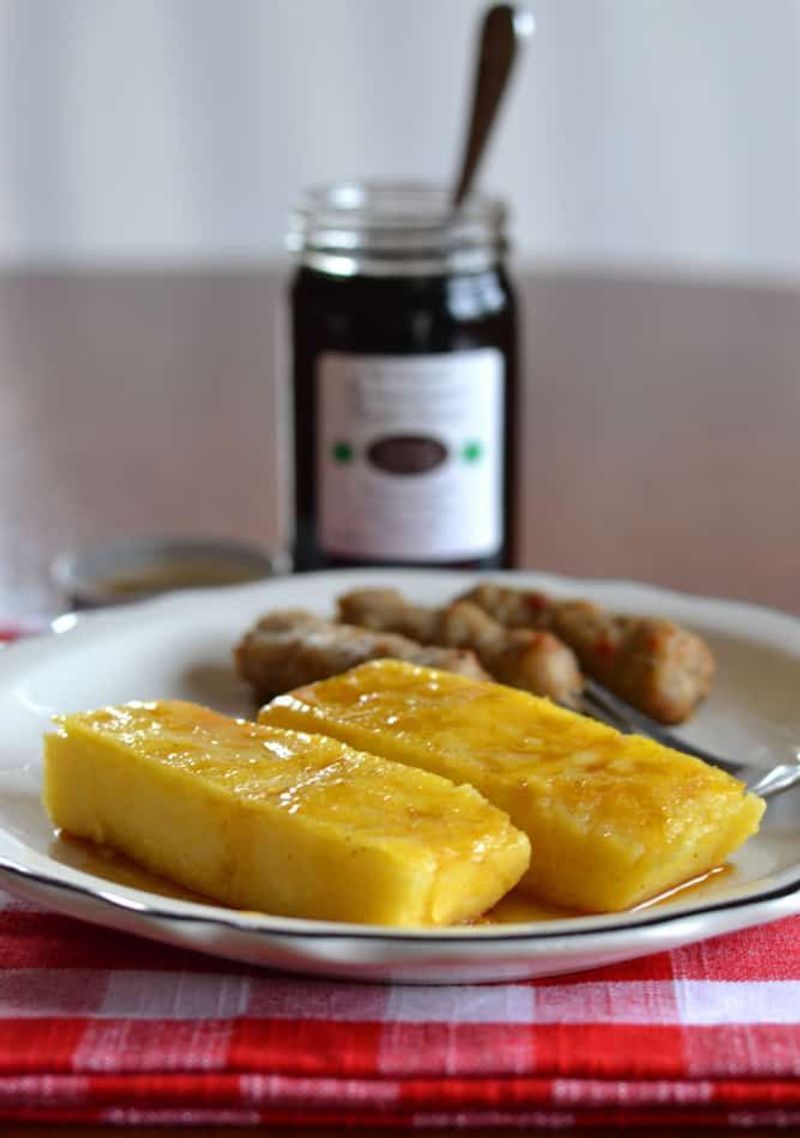
A simple mix of cornmeal, water, and salt, stirred and simmered until thick like porridge. Left to cool and slice, it could be fried up for a cheap, crispy breakfast.
It stuck to your ribs and stretched a pantry farther than you’d think. Sweetened with syrup or eaten plain, it fed families for pennies.
11. War Cake (No Eggs, No Milk)
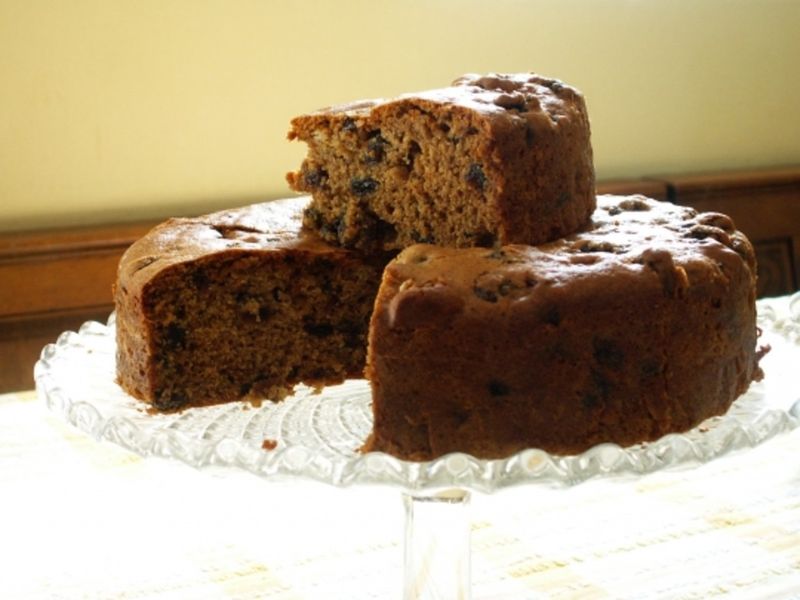
Boiled raisins, flour, spices, and a bit of sugar made this dense, spiced cake possible without eggs, milk, or butter. It was mixed in one pot and baked in tin pans or jars.
The flavor was warm and molasses-rich, with just enough chew to feel like dessert. It was humble, but celebratory all the same.
12. Dandelion Greens With Vinegar
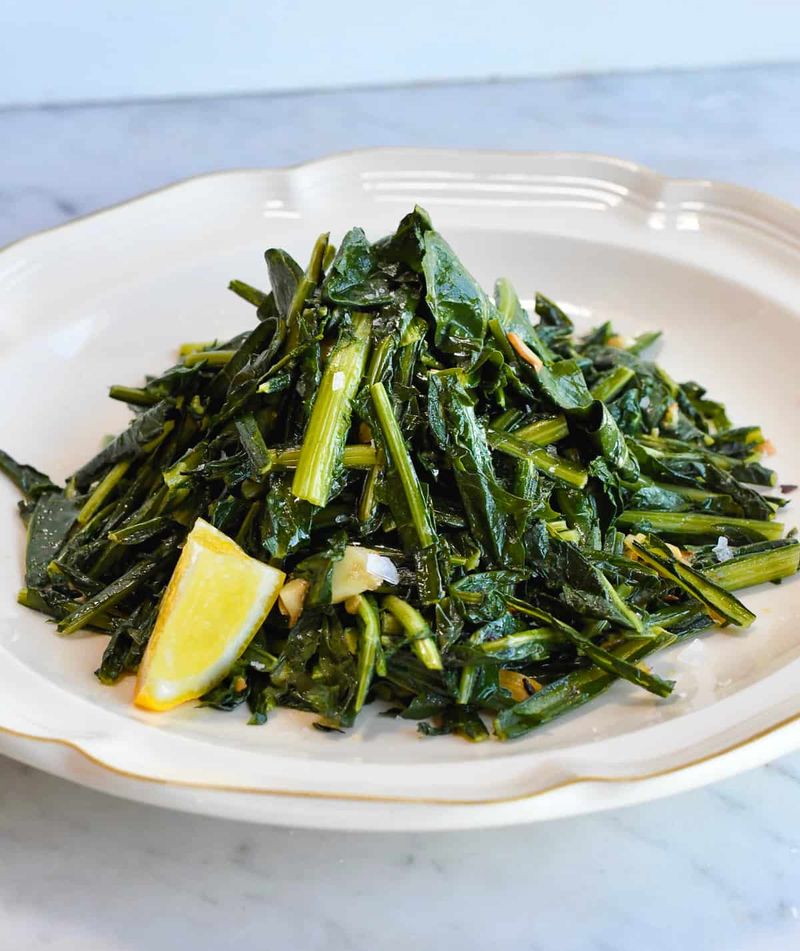
Picked from fields and front yards, dandelion leaves were washed, boiled, and served with vinegar or bacon grease. They were bitter, peppery, and surprisingly nutritious.
When there was no lettuce or canned vegetables left, this green gave people something fresh. It brought springtime to a bare table.
13. Ration Loaf

A grayish mix of lentils, oats, flour, and fat made into a loaf and baked until firm. This was Britain’s official meat substitute during WWII rationing.
It sliced like meatloaf but tasted more like porridge. Still, it filled lunchboxes and dinner plates day after day with government-approved thrift.
14. Spam And Noodle Bake
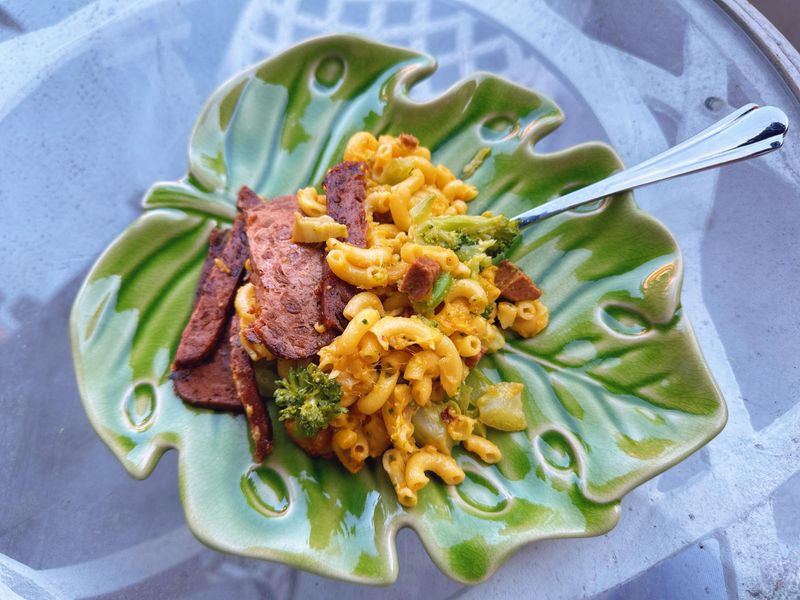
Spam cubes stirred into noodles, mixed with canned soup or evaporated milk, then baked until bubbling. It was salty, creamy, and made use of two things always in the pantry: shelf-stable meat and pasta.
Kids grew up on it and adults tolerated it. Somehow, the crunchy corners of baked noodles made it all worth it.
15. Oatmeal Sausage

Cooked oats, sage, onions, and pork scraps were packed into sausage shapes, then fried or baked. It stretched small bits of meat into something that tasted far more filling than it really was.
The oats soaked up the fat and spices, turning bland ingredients into something hearty and savory. Breakfasts during wartime had never been thriftier—or more creative.

